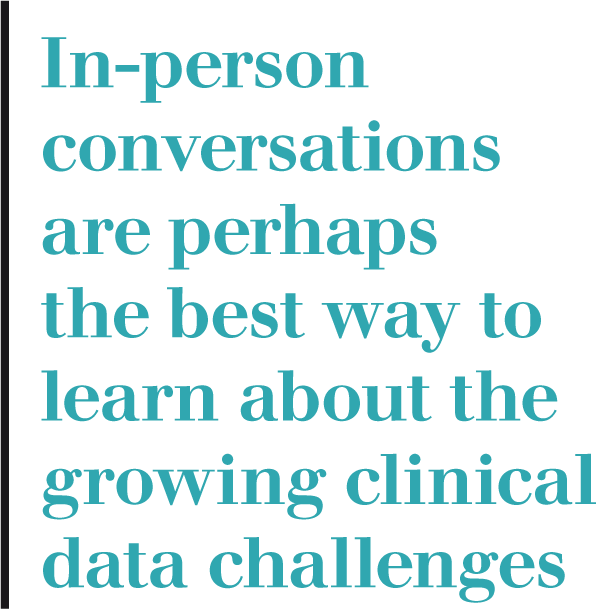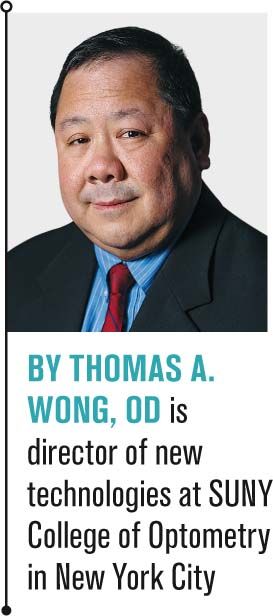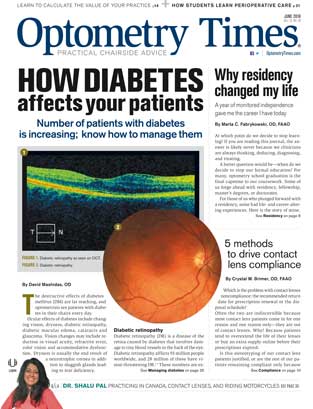How registries can help optometry
One OD explains why joining a registry could help ODs grasp new technologies and continue to evolve within the profession.



ODs have debated the question, “With technology, is optometry changing for the better?” The amount of time spent on coding and paperwork seems to take time away from caring for our patients. Except for those few ODs who operate on a cash-only basis, ODs and other healthcare providers are no longer responsible only for their individual patients, but for a network of patients.
We have heard our colleagues publicly say they are not going to concern themselves with understanding the Merit-Based Incentive Payment System (MIPS) and Medicare Access and CHIP Reauthorization Act (MACRA). Many think they are too complicated, and they would rather pay a penalty and see a few more patients a day to make up for the lost income.
While this short-term strategy may work for the time being, in the long run it is a flawed approach to improving your practice’s patient outcomes and maximizing your practice’s profitability.
Let’s look at how optometrists can use technology to navigate the growing clinical data landscape.
Ways to measure performance
In 2000, the American Medical Association (AMA) created the Physician Consortium for Performance Improvement (PCPI) as a physician-led program to develop clinical performance measures.
The PCPI has evolved into a more diverse organization that has in partnership with its members developed more than 350 measures, many of which are used in the Physician Quality Reporting System (PQRS) and meaningful use, as well as private health plan payment models.
Related: 4 technologies that improve patient interactions
The American Optometric Association (AOA) was a charter member and an integral part of the PCPI, which now includes other diverse membership organizations. The AOA also partnered with Prometheus Research to create and maintain AOA’s Measures and Outcomes Registry for EyeCare (MORE).
In 2011, the PCPI and a group of volunteer leaders established the National Quality Registry Network (NQRN), a national, multi-stakeholder network of clinical registry stewards and other professionals interested in clinical registries.
NQRN has designed tools and educational programs and raised the visibility and perceived value of clinical registries as both reporting and improvement systems. In 2016, NQRN was merged into the PCPI as a core program.
Registries and interoperability
A major project to solve the interoperability problem, the growing gap between clinicians and medical informaticists, was started by Duke University Health System’s James Tcheng, MD, at a recent PCPI meeting to help bridge the gap between the two. The appropriate implementation of MIPS and registries is not occurring because electronic health record (EHR) systems are not synchronized well with registry data entry (clinical data is not flowing into clinical registries properly). It begins with registries on Fast Healthcare Interoperability Resources (FHIR), and a move from concepts to implementation and success.
The Office of the National Coordinator for Health Information Technology (ONC) oversees the concerns around the Common Clinical Data Set (USCDI) and the Interoperability Standards Advisory. We have an interoperability problem between clinical end users (e.g., optometrists) entering data into an electronic health record (EHR), and registry stewards involved in registry data entry. ODs need the two to work cohesively so that information can better flow into clinical registries, allowing for optometry to become a more integral part of the healthcare system in this country.
Related: Technology helps to diagnose corneal ectasia
To solve this dilemma, registries on FHIR were created as a project of NQRN’s interoperability work group. The work group was launched in collaboration with James Tcheng, MD, Duke Clinical Research Institute (DCRI), the Medical Device Epidemiology Network (MDEpiNet), and Health Level Seven International (HL7) and hopes to show the value of common clinical data elements in registries to improve interoperability.
The Centers for Medicare and Medicaid Services (CMS) is committed to working with registries on FHIR to solve this problem, but no one knows what the future will bring.
Join a registry
This information can be confusing to ODs who are not involved in the administration of these programs and services. I suggest connecting with optometry colleagues in your area who have more knowledge and experience with industry registries. In-person conversations are perhaps the best way to learn about the growing clinical data challenges.
For ODs to truly understand and become part of the growing clinical data landscape, they must join a registry and fully become part of the growing healthcare system.

Newsletter
Want more insights like this? Subscribe to Optometry Times and get clinical pearls and practice tips delivered straight to your inbox.